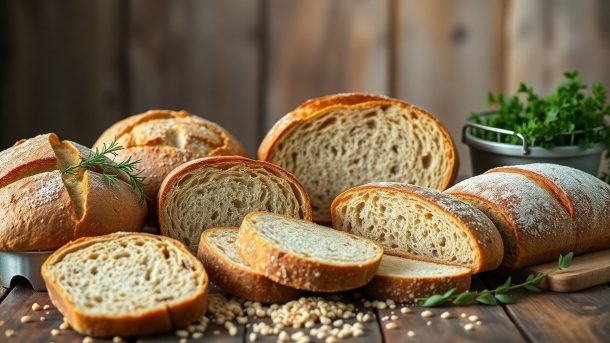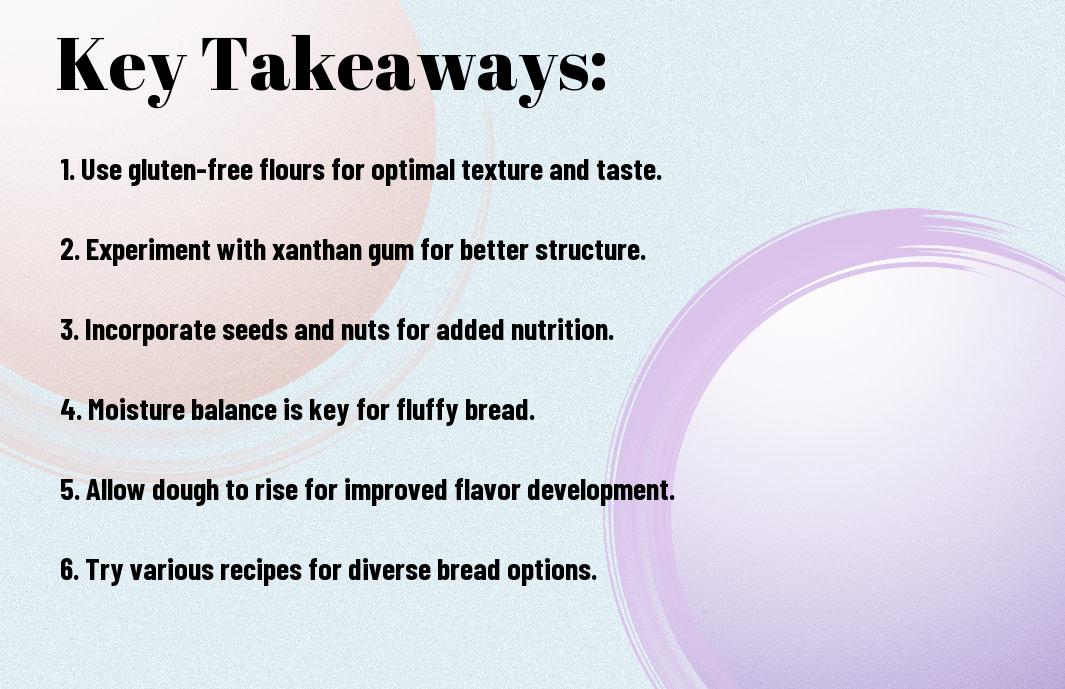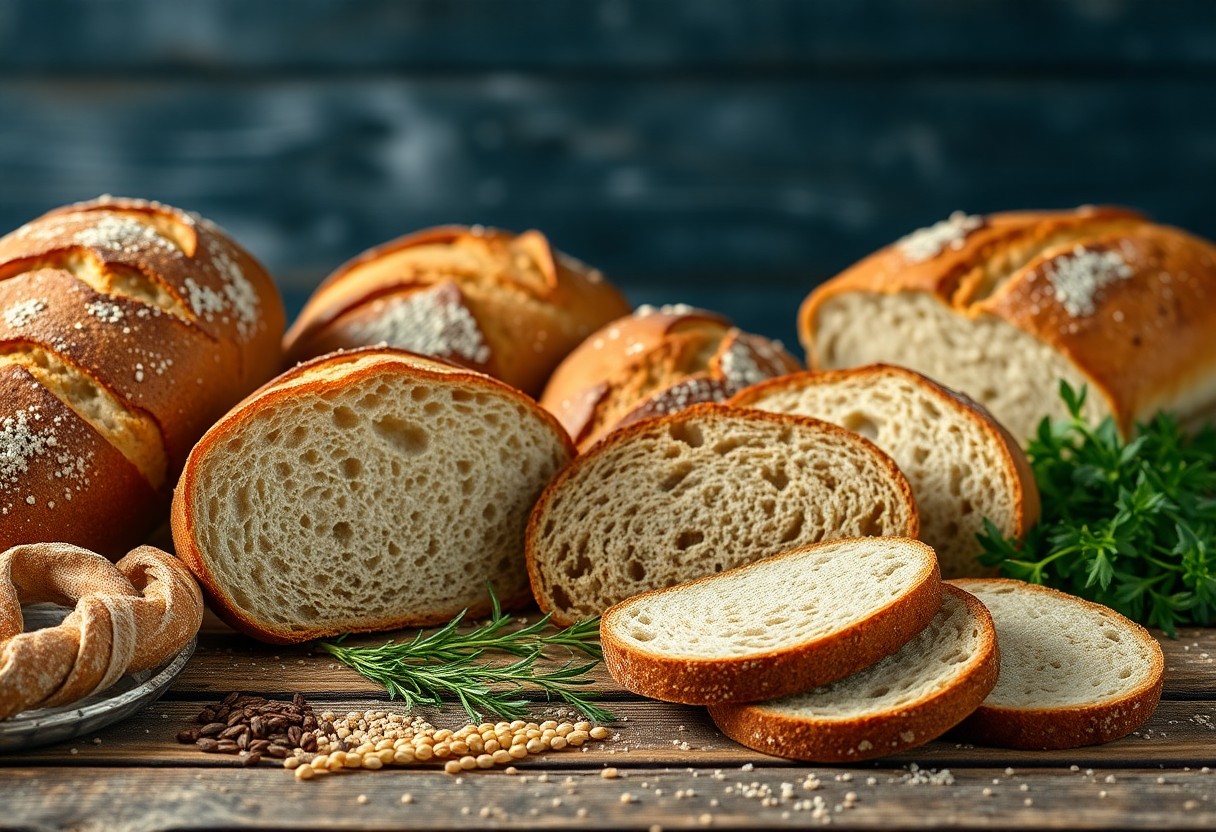As you begin on your gluten-free journey, you’ll discover a new world of culinary possibilities. You’ll need to adapt your cooking techniques and ingredient selections to accommodate your dietary needs. Your goal is to create delicious, safe meals that cater to your requirements. By following expert advice and simple guidelines, you can master the art of gluten-free cooking and enjoy your favorite dishes without compromising your health or flavor preferences. You will learn how to make this transition seamless and enjoyable.
Essential Ingredients
A well-stocked pantry is key to cooking delicious gluten-free meals. You’ll need to focus on gluten-free grains, alternative flours, and other imperatives to create tasty dishes.
Gluten-Free Grains
Besides rice, you can use quinoa, corn, and amaranth as gluten-free grain options, adding variety to your meals.
Alternative Flours
Above all, you’ll need to experiment with different flours, such as almond, coconut, or rice flour, to find the ones that work best for you.
For instance, when using alternative flours, you may need to adjust the ratio of flours and add xanthan gum or guar gum to achieve the right texture, so it’s imperative to understand how to work with these ingredients to get the best results from your gluten-free recipes.

Meal Planning
If you’re new to gluten-free cooking, planning your meals in advance can help you stay on track. You can find inspiration and guidance on Loving Your Food and Your Life Through Gluten Free Cooking to make meal planning easier.
Breakfast Ideas
Planning your breakfasts in advance can help you start your day off right with delicious gluten-free options like pancakes, waffles, or omelets.
Lunch and Dinner Options
Along with breakfast, you’ll want to plan your lunches and dinners to ensure you’re getting the nutrients you need while avoiding gluten.
Further, considering your dietary needs and preferences, you can explore a variety of gluten-free lunch and dinner options, such as salads, stir-fries, or grilled meats, and make a plan that works best for you and your lifestyle.
Cooking Techniques
After mastering gluten-free ingredients, you’ll want to focus on cooking techniques that bring out the best flavors in your dishes. You’ll find that some methods work better than others, and it’s imperative to understand the basics to achieve success in your gluten-free cooking journey.
Baking and Roasting
Around the globe, baking and roasting are popular techniques for preparing gluten-free meals. You can use your oven to cook a variety of dishes, from roasted vegetables to baked fish, and even gluten-free bread.
Sauteing and Stir-Frying
By experimenting with sauteing and stir-frying, you’ll discover new ways to add flavor and texture to your gluten-free meals. You can quickly cook your ingredients in a wok or large skillet, making it an ideal method for busy weeknights.
Considering the speed and versatility of sauteing and stir-frying, you’ll find that these techniques are perfect for cooking a wide range of gluten-free ingredients, from vegetables and meats to tofu and seafood. You can easily adjust the cooking time and heat to suit your ingredients, ensuring that your dishes turn out perfectly cooked and full of flavor.

Tips for Avoiding Cross-Contamination
Your kitchen can be a breeding ground for gluten contamination, so it’s crucial to take precautions. Consider the following:
- Designate a gluten-free zone
- Use separate utensils and equipment
Perceiving the risks of cross-contamination will help you take the necessary steps to prevent it.
Kitchen Setup
Around the same time you’re planning your meals, think about your kitchen setup and how you can minimize the risk of cross-contamination by separating your gluten-free foods and equipment.
Food Handling
Approximately the same way you handle other food safety precautions, you should handle gluten-free food with care, storing it in a dedicated area and labeling it clearly to avoid mix-ups.
Plus, when handling gluten-free food, you should always wash your hands thoroughly before and after handling, and make sure to clean any surfaces or equipment that may have come into contact with gluten, this will help you to maintain a safe and healthy gluten-free kitchen environment for you and your family.
Delicious Desserts
Unlike other courses, desserts can be particularly challenging to make gluten-free, but with the right ingredients and techniques, you can create sweet treats that are just as delicious as their traditional counterparts.
Cakes and Cupcakes
Cupcake-like treats can be made using gluten-free flours, such as almond or coconut flour, and can be just as moist and flavorful as traditional cupcakes, allowing you to enjoy your favorite desserts without worrying about gluten.
Pies and Tarts
Beneath the surface of a traditional pie or tart lies a gluten-filled crust, but you can easily make your own gluten-free crust using alternative ingredients, giving you the freedom to enjoy your favorite pies and tarts.
Hence, when making pies and tarts, you’ll want to focus on finding the right combination of ingredients to create a flaky and flavorful crust that complements your filling, and with a little experimentation, you can create gluten-free pies and tarts that are just as delicious as traditional ones, allowing you to enjoy your favorite desserts without sacrificing taste or texture.
Special Diets
For individuals with multiple dietary restrictions, cooking gluten-free meals can be challenging. You need to consider other dietary needs, such as vegan or low-carb requirements, to create a balanced meal.
Vegan and Gluten-Free
Around the world, many people follow a vegan diet, and combining it with gluten-free requirements can be complex. You will need to find alternative protein sources and grains that are both vegan and gluten-free to create a well-rounded meal.
Low-Carb and Gluten-Free
Beside the challenge of finding gluten-free ingredients, you also need to limit your carb intake, which can be difficult when avoiding gluten. You will need to focus on whole foods like meats, vegetables, and healthy fats to create a low-carb and gluten-free meal.
Further, when following a low-carb and gluten-free diet, you should pay attention to the ingredient labels and nutrition facts to ensure that you are meeting your dietary needs. You can also experiment with new ingredients like cauliflower rice and zucchini noodles to add variety to your meals.
Final Words
Now that you have explored the best tips for cooking gluten-free meals, you can confidently prepare delicious and safe dishes for yourself and others. You will find that with practice, your skills and knowledge will grow, allowing you to experiment with new ingredients and recipes. By following these tips, you will be able to create a variety of gluten-free meals that are both healthy and enjoyable, making your culinary journey a success.



